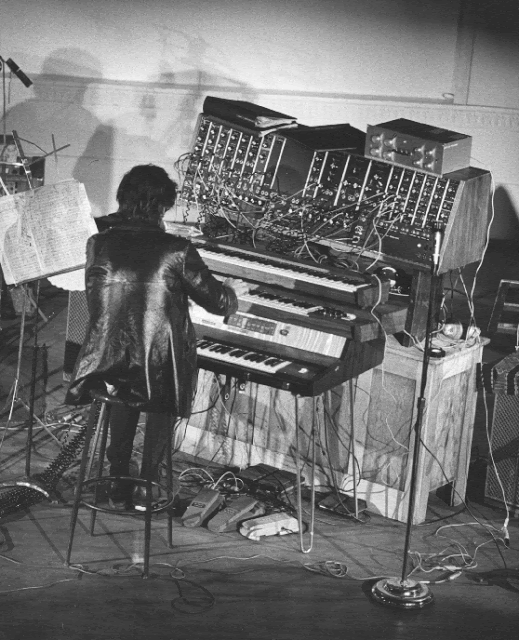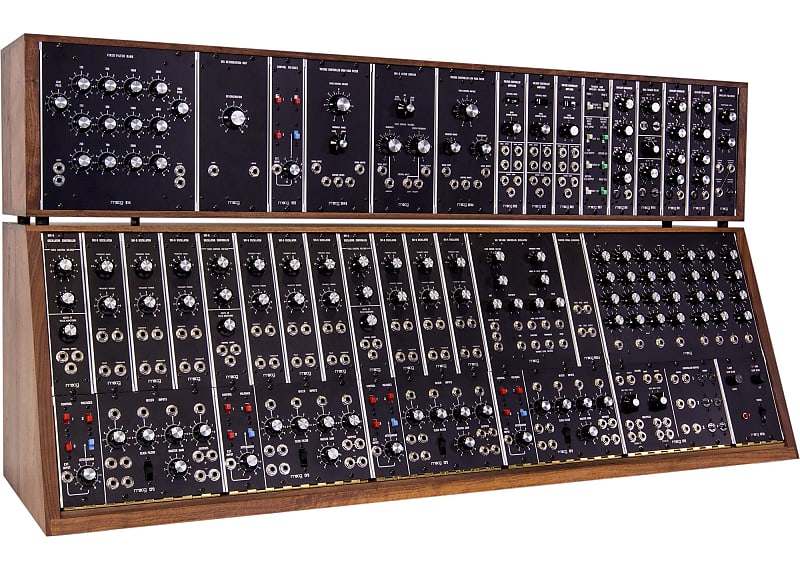When Wendy Carlos' Switched-On Bach became a hit in 1968 and brought synthesizers into the mainstream of pop music, many would-be synthesists were enthralled by the record's new instrument. The Moog modular system, pictured tantalizingly on the cover, that Carlos had turned into an orchestra, offered a whole new universe of possible sounds. But few would ever get the chance to own one of those elaborate and expensive systems.

Annette Peacock, however, was not like most people. Soon after hearing the album, she'd convince Bob Moog himself to let her have a prototype of a new modular system. And shortly after that, she'd be performing with it live, routing her vocals through its modules to create an unsettling, alien voice.
But how did a young songwriter, still relatively unknown, get a new Moog system for free?
By the late '60s, Peacock had already been steeped in Albert Ayler's free jazz, having toured with the saxophonist's group while married to its bassist Gary Peacock. After that short marriage, she began writing and performing with her second husband, pianist Paul Bley, for whom she composed what she called free-form songs, or sparse jazz ballads with plenty of room for improvisation.
When she heard Switched-On Bach shortly after its release, the record and its Moog synthesizer were a revelation.
Speaking to The Quietus in 2014, Peacock said, "I got really excited because it was the first new instrument in 300 years and I was trying to encourage Paul and get some enthusiasm going. I said, 'We have to get this instrument.'"
While Bley was at first not enthusiastic, Peacock had more to prove. "He was not that interested because he didn't have to be," she said. "I was the young artist, so it was very exciting to me as I hadn't established myself yet. I didn't have an allegiance to anything that I needed to abandon to pick up the synthesizer."
Peacock saw the emergence of the synthesizer as the next step in her free jazz evolution: "That's what attracted me to synthesizers, thinking if I could create the sound, start from initiating the sound at the beginning, creating the rise time and the envelope and the decay time, I could slow things down even more. So I was interested in forming a sound that didn't already exist from the beginning."
The couple convinced Moog to let them come check out his work. But visiting is one thing; driving away with an expensive modular system is another. On the way there, Peacock thought up what would prove to be a convincing pitch:
"Well, on the drive down I psyched out what would be an argument that would persuade him. And I figured that he would want the Moog to be used to make serious music and to be seen to be involved in serious music, because at the time it wasn't—it was being used in jingles and in synthesizing Bach and things like that. It wasn't taken seriously as an instrument. So that's basically what I told Paul to pitch to him and it worked, because he gave us a prototype and we drove it back that evening."

At the same time, rock luminaries like The Beatles and The Rolling Stones were buying and beginning to use Moog's new instruments—and they learned, as Peacock did, that the manual-less systems were difficult to learn.
After having successfully commandeered a Moog, Peacock could barely use it for six months, as she and Bley tried to find someone to teach them how. Peacock took matters into her own hands. As recounted in Thom Holmes' 2008 book, Electronic and Experimental Music: Technology, Music, and Culture:
"The instrument sat dormant in the bedroom of their New York apartment for several months until Peacock set up the complicated machine and started to experiment. After trying out various patches, Peacock discovered that she could plug a microphone directly into one of the modular's source input jacks and modulate it using the machine's filters and oscillators. By the end of 1969, they were taking the bulky instrument on the road."
Performing and touring as The Bley-Peacock Synthesizer Show, the group's electrified jazz and Peacock's Moog-effected voice could be heard on stages like New York's Town Hall and, eventually, on the group's debut album. The record company and audiences both didn't quite know what to make of it.
In a short documentary about the making of her 2000 album An Acrobat's Heart, Peacock looked back on this time and said, "You bring things to people, right—you think they're going to be really excited about something. But we took it on the road and got booed off stages. That was a shock."
By her own account, it was a "nutty band," and one that also required quite a bit of set-up time.
"At that time [a] synthesizer was generally very difficult to use in the live situation because it was huge and heavy to move around, and not designed for that purpose. And it was unstable. I was never quite sure what sound I was going to get and I was very much flying by the seat of my pants," Peacock told The Quietus. "When we first started performing with it, the audiences had to wait for 20 minutes between songs while I changed the patches from a book of diagrams I'd made. It was very convoluted, but we were pioneering and one has to expect that sort of thing."
You can hear Peacock's Moog-drenched voice on Revenge: The Bigger the Love the Greater the Hate, the Bley-Peacock Synthesizer Show's debut album that, while recorded in 1969, wasn't released until 1971, after her original record label refused to release it. (In 2014, Peacock re-released it under her own name as I Belong to a World That's Destroying Itself.)
By 1971, Peacock was signed as a solo artist to RCA Records, bringing her street-wise blend of synthesis, rock, and avant-garde jazz to I'm the One. While that record too never caught on with a large audience, it did cement Peacock as an innovative artist, and, in the decades since, has become a cult classic along with later albums like X-Dreams and The Perfect Release.
Enjoying the newfound appreciation for her early work, Peacock has been performing live again, on rare occasions, such as her scheduled appearance at this month's Big Ears Festival in Knoxville, Tennessee. Whether the elaborate and temperamental Moog modular system will be on stage with her remains to be seen.
